Photochemical Synthesis of Nanosheet Tin Di/Sulfide with Sunlight Response on Water Pollutant Degradation
Abstract
:1. Introduction
2. Materials and Methods
2.1. Photochemical Synthesis of Tin Di/Sulfide (PS-SnS2-x)
2.2. Characterization
2.3. Catalytic Activity
3. Results and Discussion
3.1. Characterization of Photochemical Synthesis of Tin Disufides (PS-SnS2-x)
3.2. Photocatalytic Activity on Sunlight Response
3.3. Plausible Mechanisme
4. Conclusions
Supplementary Materials
Funding
Acknowledgments
Conflicts of Interest
References
- Oelgemöller, M.; Jung, C.; Mattay, J. Green Photochemistry: Production of Fine Chemicals with Sunlight. Pure Appl. Chem. 2007, 79, 1939–1947. [Google Scholar] [CrossRef]
- Matmin, J.; Affendi, I.; Endud, S. Direct-Continuous Preparation of Nanostructured Titania-Silica Using Surfactant-Free Non-Scaffold Rice Starch Template. Nanomaterials 2018, 8, 514. [Google Scholar] [CrossRef] [PubMed]
- Matmin, J.; Affendi, I.; Ibrahim, S.I.; Endud, S. Additive-Free Rice Starch-Assisted Synthesis of Spherical Nanostructured Hematite for Degradation of Dye Contaminant. Nanomaterials 2018, 8, 702. [Google Scholar] [CrossRef] [PubMed]
- Yoon, T.P.; Ischay, M.A.; Du, J. Visible Light Photocatalysis as a Greener Approach to Photochemical Synthesis. Nat. Chem. 2010, 2, 527. [Google Scholar] [CrossRef] [PubMed]
- Gu, H.; Yang, Y.; Tian, J.; Shi, G. Photochemical Synthesis of Noble Metal (Ag, Pd, Au, Pt) on Graphene/ZnO Multihybrid Nanoarchitectures as Electrocatalysis for H2O2 Reduction. ACS Appl. Mater. Interfaces. 2013, 5, 6762–6768. [Google Scholar] [CrossRef] [PubMed]
- Wei, H.; Huang, K.; Wang, D.; Zhang, R.; Ge, B.; Ma, J.; Wen, B.; Zhang, S.; Li, Q.; Lei, M.; Zhang, C. Iced Photochemical Reduction to Synthesize Atomically Dispersed Metals by Suppressing Nanocrystal Growth. Nat. Commun. 2017, 8, 1490. [Google Scholar] [CrossRef] [PubMed]
- Watanabe, K.; Menzel, D.; Nilius, N.; Freund, H.J. Photochemistry on Metal Nanoparticles. Chem. Rev. 2006, 106, 4301–4320. [Google Scholar] [CrossRef]
- Fang, Z.; Fan, Y.; Liu, Y. Photochemical Synthesis and Photocatalysis Application of ZnS/Amorphous Carbon Nanotubes Composites. Front. Optoelectron. China 2011, 4, 121. [Google Scholar] [CrossRef]
- Placido, T.; Comparelli, R.; Giannici, F.; Cozzoli, P.D.; Capitani, G.; Striccoli, M.; Agostiano, A.; Curri, M.L. Photochemical Synthesis of Water-Soluble Gold Nanorods: the Role of Silver in Assisting Anisotropic Growth. Chem. Mater. 2009, 21, 4192–4202. [Google Scholar] [CrossRef]
- Zhao, W.B.; Zhu, J.J.; Chen, H.Y. Photochemical Synthesis of Au and Ag Nanowires on a Porous Aluminum Oxide Template. J. Cryst. Growth. 2003, 258, 176–180. [Google Scholar] [CrossRef]
- Chen, Y.; Fan, Z.; Zhang, Z.; Niu, W.; Li, C.; Yang, N.; Chen, B.; Zhang, H. Two-Dimensional Metal Nanomaterials: Synthesis, Properties, and Applications. Chem. Rev. 2018, 118, 6409–6455. [Google Scholar] [CrossRef] [PubMed]
- Huang, X.; Qi, X.; Huang, Y.; Li, S.; Xue, C.; Gan, C.L.; Boey, F.; Zhang, H. Photochemically Controlled Synthesis of Anisotropic Au Nanostructures: Platelet-Like Au Nanorods and Six-Star Au Nanoparticles. ACS Nano. 2010, 4, 6196–6202. [Google Scholar] [CrossRef] [PubMed]
- Bharath, G.; Anwer, S.; Mangalaraja, R.V.; Alhseinat, E.; Banat, F.; Ponpandian, N. Sunlight-Induced Photochemical Synthesis of Au Nanodots on α-Fe2O3@ Reduced Graphene Oxide Nanocomposite and their Enhanced Heterogeneous Catalytic Properties. Sci. Rep. 2018, 8, 5718. [Google Scholar] [CrossRef] [PubMed]
- Chen, C.; Zhou, P.; Wang, N.; Ma, Y.; San, H. UV-Assisted Photochemical Synthesis of Reduced Graphene Oxide/ZnO Nanowires Composite for Photoresponse Enhancement in UV Photodetectors. Nanomaterials 2018, 8, 26. [Google Scholar] [CrossRef] [PubMed]
- Pu, F.; Ran, X.; Guan, M.; Huang, Y.; Ren, J.; Qu, X. Biomolecule-Templated Photochemical Synthesis of Silver Nanoparticles: Multiple Readouts of Localized Surface Plasmon Resonance for Pattern Recognition. Nano Res. 2018, 11, 3213–3221. [Google Scholar] [CrossRef]
- Soltani, N.; Saion, E.; Hussein, M.Z.; Erfani, M.; Abedini, A.; Bahmanrokh, G.; Navasery, M.; Vaziri, P. Visible light-induced degradation of methylene blue in the presence of photocatalytic ZnS and CdS nanoparticles. Int. J. Mol. Sci. 2012, 13, 12242–12258. [Google Scholar] [CrossRef] [PubMed]
- Balu, S.; Uma, K.; Pan, G.T.; Yang, T.; Ramaraj, S. Degradation of Methylene Blue Dye in the Presence of Visible Light using SiO2 @ α-Fe2O3 Nanocomposites Deposited on SnS2 flowers. Materials 2018, 11, 1030. [Google Scholar] [CrossRef]
- Dhanasekar, M.; Ratha, S.; Rout, C.S.; Bhat, S.V. Efficient Sono-Photocatalytic Degradation of Methylene Blue Using Nickel Molybdate Nanosheets under Diffused Sunlight. J. Environ. Chem. Eng. 2017, 5, 2997–3004. [Google Scholar] [CrossRef]
- Oelgemoller, M. Solar Photochemical Synthesis: From the Beginnings of Organic Photochemistry to the Solar Manufacturing of Commodity Chemicals. Chem. Rev. 2016, 116, 9664–9682. [Google Scholar] [CrossRef]
- Oelgemöller, M.; Healy, N.; de Oliveira, L.; Jung, C.; Mattay, J. Green Photochemistry: Solar-Chemical Synthesis of Juglone with Medium Concentrated Sunlight. Green Chem. 2006, 8, 831–834. [Google Scholar] [CrossRef]
- Stichnoth, D.; Kölle, P.; Kimbrough, T.J.; Riedle, E.; de Vivie-Riedle, R.; Trauner, D. Photochemical Formation of Intricarene. Nat. Commun. 2014, 5, 5597. [Google Scholar] [CrossRef]
- Aikins, G.A.; Fay, A.C. Effect of Light on the Reduction of Methylene Blue in Milk. J. Agric. Res. 1932, 44, 85–95. [Google Scholar]
- Djellabi, R.; Ghorab, M.F.; Sehili, T. Simultaneous Removal of Methylene Blue and Hexavalent Chromium from Water using TiO2/Fe (III)/H2O2/Sunlight. CLEAN Soil Air Water 2017, 45, 1500379. [Google Scholar] [CrossRef]
- Molla, A.; Sahu, M.; Hussain, S. Under Dark and Visible Light: Fast Degradation of Methylene Blue in the Presence of Ag–In–Ni–S Nanocomposites. J. Mater. Chem. A. 2015, 3, 15616–15625. [Google Scholar] [CrossRef]
- Park, S.; Park, J.; Selvaraj, R.; Kim, Y. Facile Microwave-Assisted Synthesis of SnS2 Nanoparticles for Visible-Light Responsive Photocatalyst. J. Ind. Eng. Chem. 2015, 31, 269–275. [Google Scholar] [CrossRef]
- Dubrovskii, G.B. Crystal Structure and Electronic Spectrum of SnS2. Phys. Solid State. 1998, 40, 1557–1562. [Google Scholar] [CrossRef]
- Yu, J.; Xu, C.Y.; Ma, F.X.; Hu, S.P.; Zhang, Y.W.; Zhen, L. Monodisperse SnS2 Nanosheets for High-Performance Photocatalytic Hydrogen Generation. ACS Appl. Mater. Interfaces. 2014, 6, 22370–22377. [Google Scholar] [CrossRef]
- Huang, Y.; Sutter, E.; Sadowski, J.T.; Cotlet, M.; Monti, O.L.; Racke, D.A.; Neupane, M.R.; Wickramaratne, D.; Lake, R.K.; Parkinson, B.A.; Sutter, P. Tin Disulfide—An Emerging Layered Metal Dichalcogenide Semiconductor: Materials Properties and Device Characteristics. ACS Nano. 2014, 8, 10743–10755. [Google Scholar] [CrossRef]
- Zhang, Z.; Zhao, H.; Du, Z.; Chang, X.; Zhao, L.; Du, X.; Li, Z.; Teng, Y.; Fang, J.; Świerczek, K. (101) Plane-Oriented SnS2 Nanoplates with Carbon Coating: a High-Rate and Cycle-Stable Anode Material for Lithium Ion Batteries. ACS Appl. Mater. Interfaces. 2017, 9, 35880–35887. [Google Scholar] [CrossRef]
- Wei, R.; Hu, J.; Zhou, T.; Zhou, X.; Liu, J.; Li, J. Ultrathin SnS2 Nanosheets with Exposed {0 0 1} Facets and Enhanced Photocatalytic Properties. Acta Mater. 2014, 66, 163–171. [Google Scholar] [CrossRef]
- Parveen, N.; Ansari, S.A.; Alamri, H.R.; Ansari, M.O.; Khan, Z.; Cho, M.H. Facile Synthesis of SnS2 Nanostructures with Different Morphologies for High-Performance Supercapacitor Applications. ACS Omega 2018, 3, 1581–1588. [Google Scholar] [CrossRef]
- Taleblou, M.; Borhani, E.; Yarmand, B.; Kolahi, A.R. Structural and Optoelectrical Properties of Single Phase SnS2 Thin Films at Various Substrate Temperatures by Spray Pyrolysis. Iran. J. Mater. 2018, 15, 43–52. [Google Scholar]
- Liu, S.; Lu, X.; Xie, J.; Cao, G.; Zhu, T.; Zhao, X. Preferential C-Axis Orientation of Ultrathin SnS2 Nanoplates on Graphene as High-Performance Anode for Li-Ion Batteries. ACS Appl. Mater. Interfaces 2013, 5, 1588–1595. [Google Scholar] [CrossRef] [PubMed]
- Zhang, H.; van Pelt, T.; Mehta, A.N.; Bender, H.; Radu, I.; Caymax, M.; Vandervorst, W.; Delabie, A. Nucleation and Growth Mechanism of 2D SnS2 by Chemical Vapor Deposition: Initial 3D Growth Followed by 2D Lateral Growth. 2D Mater. 2018, 5, 035006. [Google Scholar] [CrossRef]
- Kamkui, H.M.; Laminsi, S.; Njopwouo, D.; Djowe, A.T. Deep Insight in Thermal Synthesis of Tin Disulphide (SnS2) Microplates, Starting from Tin Sulphate and Sulfur: Growth Mechanism based on LUX FLOOD’s Theory of Acid and Base. Chalcogenide Lett. 2014, 11, 219–226. [Google Scholar]
- Fu, W.; Wang, J.; Zhou, S.; Li, R.; Peng, T. Controllable Fabrication of Regular Hexagon-Shaped SnS2 Nanoplates and Their Enhanced Visible-Light-Driven H2 Production Activity. ACS Appl Nano Mater. 2018, 1, 2923–2933. [Google Scholar] [CrossRef]
- Zhang, Y.; Yuan, X.; Wang, Y.; Chen, Y. One-Pot Photochemical Synthesis of Graphene Composites Uniformly Deposited with Silver Nanoparticles and their High Catalytic Activity towards the Reduction of 2-Nitroaniline. J. Mater. Chem. 2012, 22, 7245–7251. [Google Scholar] [CrossRef]
- Zhang, Z.; Zhao, H.; Fang, J.; Chang, X.; Li, Z.; Zhao, L. Tin Disulfide Nanosheets with Active-Site-Enriched Surface Interfacially Bonded on Reduced Graphene Oxide Sheets as Ultra-Robust Anode for Lithium and Sodium Storage. ACS Appl. Mater. Interfaces 2018, 10, 28533–28540. [Google Scholar] [CrossRef]
- Zhang, Y.C.; Du, Z.N.; Li, S.Y.; Zhang, M. Novel Synthesis and High Visible Light Photocatalytic Activity of SnS2 Nanoflakes from SnCl2· 2H2O and S Powders. Appl. Catal. B. 2010, 95, 153–159. [Google Scholar] [CrossRef]
- Kim, K.M.; Kwak, B.S.; Kang, S.; Kang, M. Synthesis of Submicron Hexagonal Plate-Type SnS2 and band gap-tuned Sn1−xTixS2 Materials and Their Hydrogen Production Abilities on Methanol/Water Photosplitting. Int. J. Photoenergy 2014, 1–9. [Google Scholar] [CrossRef]
- Zhou, T.; Pang, W.K.; Zhang, C.; Yang, J.; Chen, Z.; Liu, H.K.; Guo, Z. Enhanced Sodium-Ion Battery Performance by Structural Phase Transition from Two-Dimensional Hexagonal-SnS2 to Orthorhombic-SnS. ACS Nano. 2014, 8, 8323–8333. [Google Scholar] [CrossRef] [PubMed]
- Kim, T.J.; Kim, C.; Son, D.; Choi, M.; Park, B. Novel SnS2-Nanosheet Anodes for Lithium-Ion Batteries. J. Power Sources 2007, 167, 529–535. [Google Scholar] [CrossRef]
- Lin, Y.T.; Shi, J.B.; Chen, Y.C.; Chen, C.J.; Wu, P.F. Synthesis and Characterization of Tin Disulfide (SnS2) Nanowires. Nanoscale Res. Lett. 2009, 4, 694. [Google Scholar] [CrossRef] [PubMed]
- Gajendiran, J.; Rajendran, V. Synthesis of SnS2 Nanoparticles by a Surfactant-Mediated Hydrothermal Method and Their Characterization. Adv. Nat. Sci: Nanosci. Nanotechnol. 2011, 2, 015001. [Google Scholar]
- Seo, J.W.; Jang, J.T.; Park, S.W.; Kim, C.; Park, B.; Cheon, J. Two-Dimensional SnS2 Nanoplates with Extraordinary High Discharge Capacity for Lithium Ion Batteries. Adv. Mater. 2008, 20, 4269–4273. [Google Scholar] [CrossRef]
- Degrauw, A.; Armstrong, R.; Rahman, A.A.; Ogle, J.; Whittaker-Brooks, L. Catalytic Growth of Vertically Aligned SnS/SnS2 p–n Heterojunctions. Mater. Res. Express. 2017, 4, 094002. [Google Scholar] [CrossRef]
- Cheng, L.; Li, D.; Dong, X.; Ma, Q.; Yu, W.; Wang, X.; Yu, H.; Wang, J.; Liu, G. Synthesis, Characterization and Photocatalytic Performance of SnS Nanofibers and SnSe Nanofibers Derived from the Electrospinning-made SnO2 Nanofibers. Mater. Res. (AHEAD) 2017. [Google Scholar] [CrossRef]
- Karuppasamy, P.; Sivasubramani, V.; Pandian, M.S.; Ramasamy, P. Growth and Characterization of Semi-Organic Third Order Nonlinear Optical (NLO) Potassium 3, 5-dinitrobenzoate (KDNB) Single Crystals. RSC Adv. 2016, 6, 109105–109123. [Google Scholar] [CrossRef]
- Mondal, C.; Ganguly, M.; Pal, J.; Roy, A.; Jana, J.; Pal, T. Morphology Controlled Synthesis of SnS2 Nanomaterial for Promoting Photocatalytic Reduction of Aqueous Cr (VI) under Visible Light. Langmuir 2014, 30, 4157–4164. [Google Scholar] [CrossRef]
- Shiga, Y.; Umezawa, N.; Srinivasan, N.; Koyasu, S.; Sakai, E.; Miyauchi, M. A Metal Sulfide Photocatalyst Composed of Ubiquitous Elements for Solar Hydrogen Production. Chem. Commun. 2016, 52, 7470–7473. [Google Scholar] [CrossRef]
- Lin, C.; Zhu, M.; Zhang, T.; Liu, Y.; Lv, Y.; Li, X.; Liu, M. Cellulose/SnS2 Composite with Enhanced Visible-Light Photocatalytic Activity Prepared by Microwave-Assisted Ionic Liquid Method. RSC Adv. 2017, 7, 12255–12264. [Google Scholar] [CrossRef]
- Li, M.; Liu, E.; Hu, H.; Ouyang, S.; Xu, H.; Wang, D. Surfactant-Free Synthesis of Single Crystalline SnS2 and Effect of Surface Atomic Structure on the Photocatalytic Property. Int. J. Photoenergy 2014, 2014. [Google Scholar] [CrossRef]
- Liu, H.; Liu, Y.; Wang, Z.; He, P. Facile Synthesis of Monodisperse, Size-Tunable SnS Nanoparticles Potentially for Solar Cell Energy Conversion. Nanotechnology 2010, 21, 105707. [Google Scholar] [CrossRef] [PubMed]
- Liu, G.; Li, Z.; Hasan, T.; Chen, X.; Zheng, W.; Feng, W.; Jia, D.; Zhou, Y.; Hu, P.A. Vertically Aligned Ultrathin SnS2 Nanosheets with Strong Photon Capturing Capability for Efficient Photoelectrochemical Water Splitting. J. Mater. Chem. A 2017, 5, 1989–1995. [Google Scholar] [CrossRef]
- Seminovski, Y.; Palacios, P.; Wahnón, P. Effect of Van Der Waals Interaction on the Properties of SnS2 Layered Semiconductor. Thin Solid Films 2013, 535, 387–389. [Google Scholar] [CrossRef]
- Shown, I.; Samireddi, S.; Chang, Y.C.; Putikam, R.; Chang, P.H.; Sabbah, A.; Fu, F.Y.; Chen, W.F.; Wu, C.I.; Yu, T.Y.; Chung, P.W. Carbon-Doped SnS2 Nanostructure as a High-Efficiency Solar Fuel Catalyst Under Visible Light. Nat. Commun. 2018, 9, 169. [Google Scholar] [CrossRef] [PubMed]
- Pałosz, B.; Pałosz, W.; Gierlotka, S. Polytypism of Crystals of Tin Disulphide; Structures of 21 Polytypes of SnS2. Acta Crystallogr. C 1985, 41, 807–811. [Google Scholar] [CrossRef]
- Ren, W.; Zhang, H.; Guan, C.; Cheng, C. SnS2 Nanosheets Arrays Sandwiched by N-Doped Carbon and TiO2 for High-Performance Na-Ion Storage. Green Energy Environ. 2018, 3, 42–49. [Google Scholar]
- Huang, P.C.; Shen, Y.M.; Brahma, S.; Shaikh, M.O.; Huang, J.L.; Wang, S.C. SnSx (x = 1, 2) Nanocrystals as Effective Catalysts for Photoelectrochemical Water Splitting. Catalysts 2017, 7, 252. [Google Scholar] [CrossRef]
- Soltani, T.; Entezari, M.H. Photolysis and Photocatalysis of Methylene Blue by Ferrite Bismuth Nanoparticles Under Sunlight Irradiation. J. Mol. Catal. A Chem. 2013, 377, 197–203. [Google Scholar] [CrossRef]
- Bhati, A.; Singh, A.; Tripathi, K.M.; Sonkar, S.K. Sunlight-Induced Photochemical Degradation of Methylene Blue by Water-Soluble Carbon Nanorods. Int. J. Photoenergy 2016, 2016. [Google Scholar] [CrossRef]
- Wu, Z.; Wang, F.; Zuo, S.; Li, S.; Geng, B.; Zhuo, R.; Yan, P. 3D Flower-Like Hierarchitectures Constructed by SnS/SnS2 Heterostructure Nanosheets for High-Performance Anode Material in Lithium-Ion Batteries. J. Nanomater. 2015, 2015, 1. [Google Scholar]
- Li, B.; Xing, T.; Zhong, M.; Huang, L.; Lei, N.; Zhang, J.; Li, J.; Wei, Z. A Two-Dimensional Fe-Doped SnS2 Magnetic Semiconductor. Nat. Commun. 2017, 8, 1958. [Google Scholar] [CrossRef]
- Tiwari, J.N.; Tiwari, R.N.; Kim, K.S. Zero-Dimensional, One-Dimensional, Two-Dimensional and Three-Dimensional Nanostructured Materials for Advanced Electrochemical Energy Devices. Prog. Mater. Sci. 2012, 57, 724–803. [Google Scholar] [CrossRef]
- Gong, Y.; Yuan, H.; Wu, C.L.; Tang, P.; Yang, S.Z.; Yang, A.; Li, G.; Liu, B.; van de Groep, J.; Brongersma, M.L.; Chisholm, M.F. Spatially Controlled Doping of Two-Dimensional SnS2 through Intercalation for Electronics. Nat. Nanotechnol. 2018, 13, 294. [Google Scholar] [CrossRef] [PubMed]
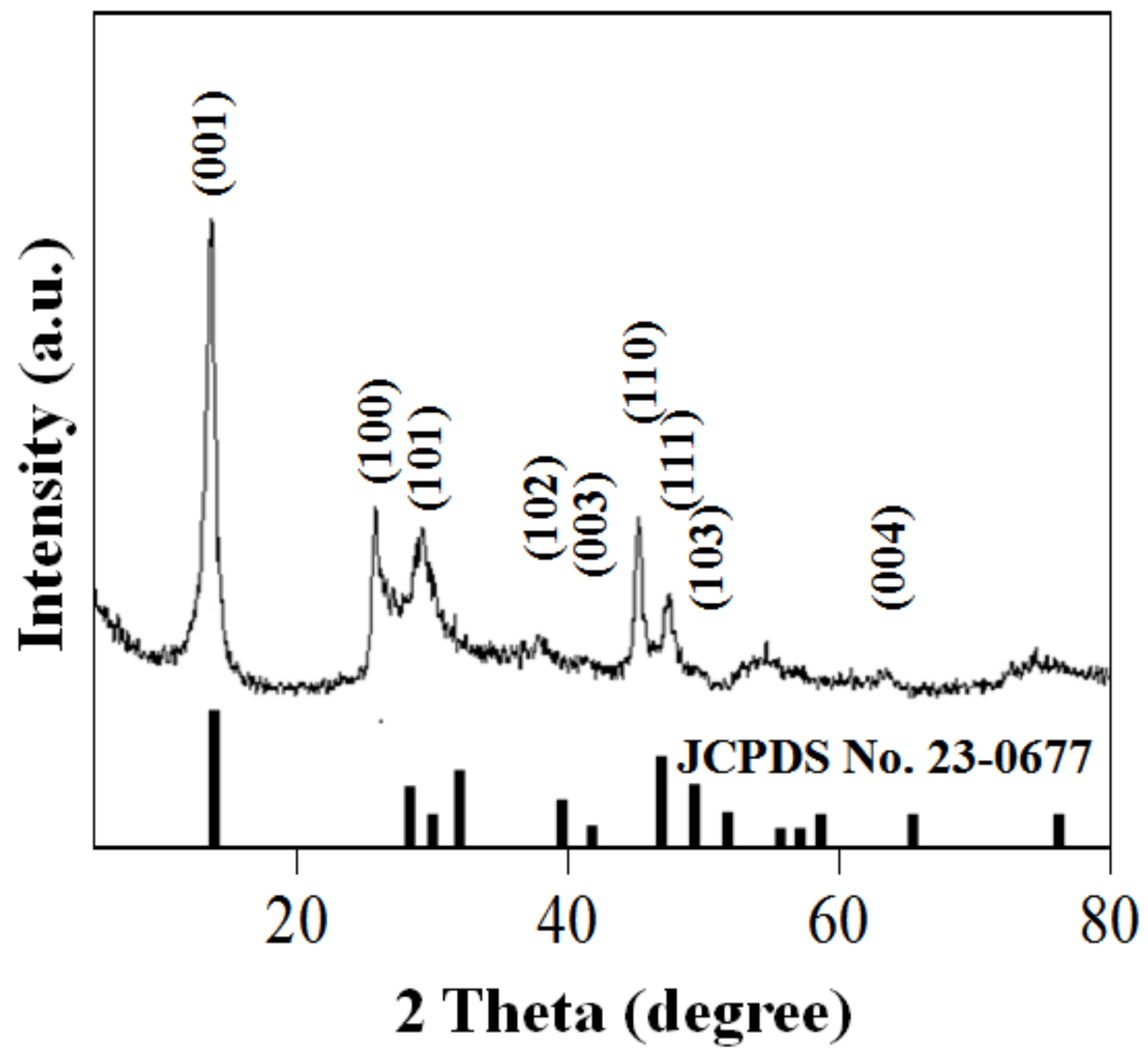

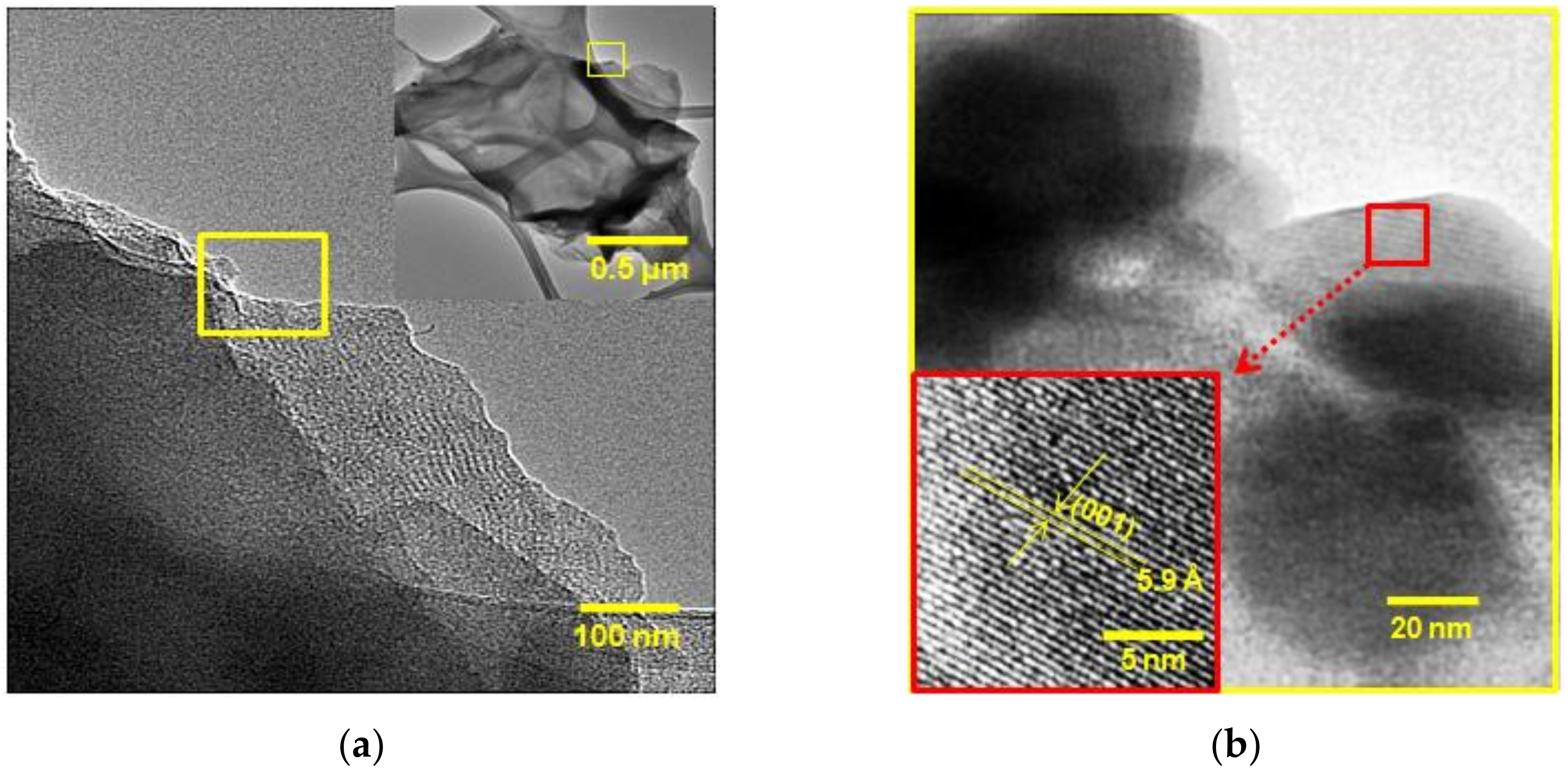
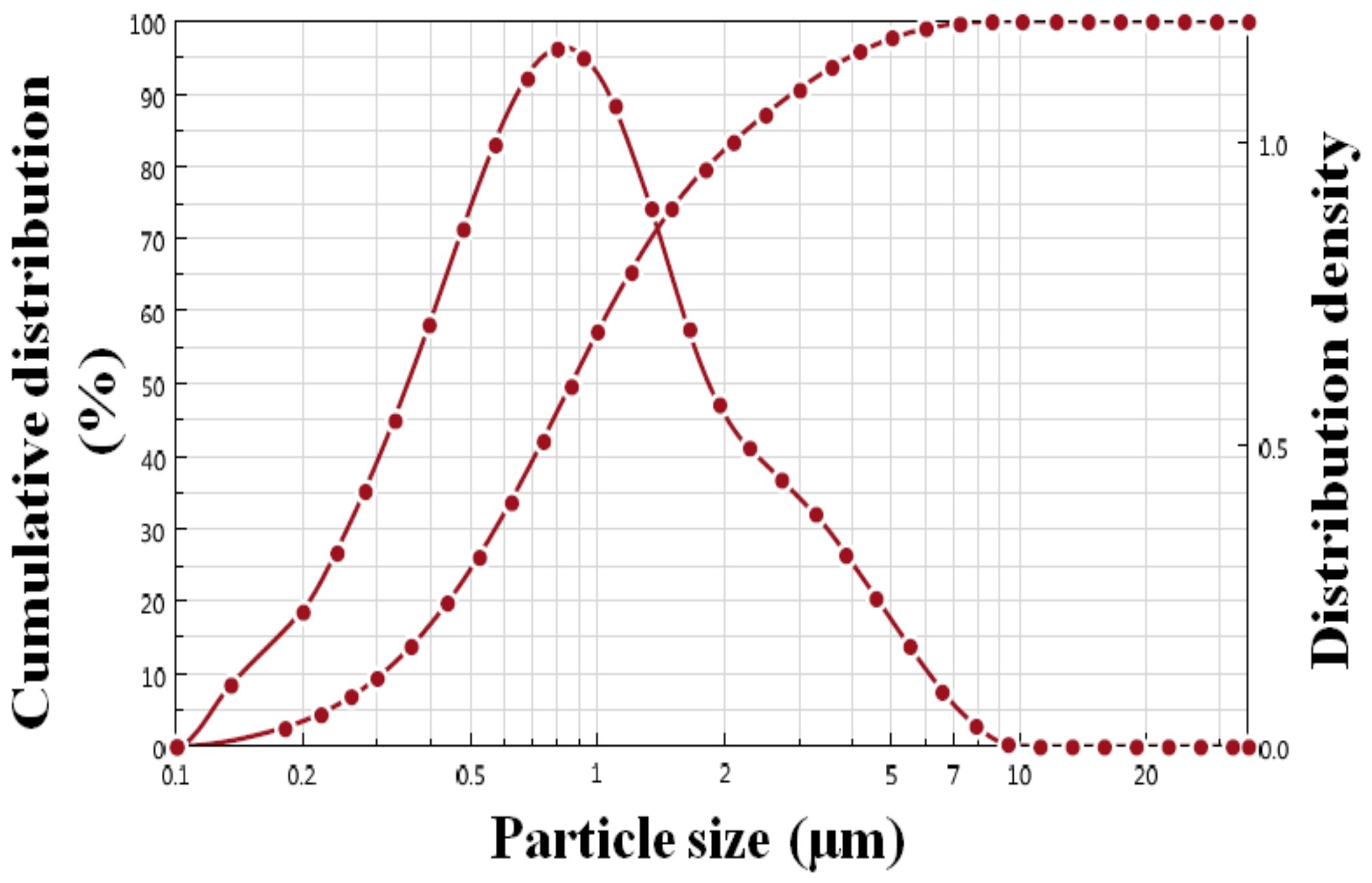
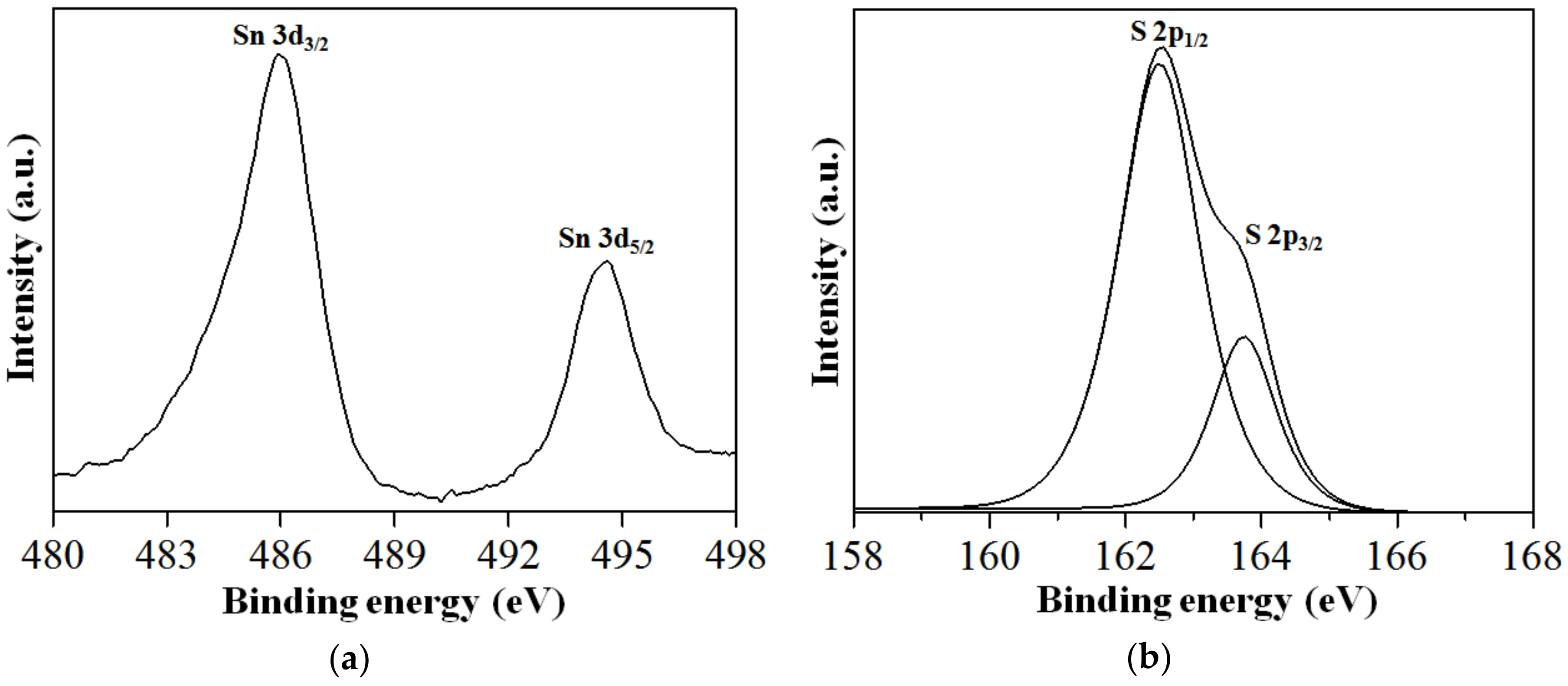
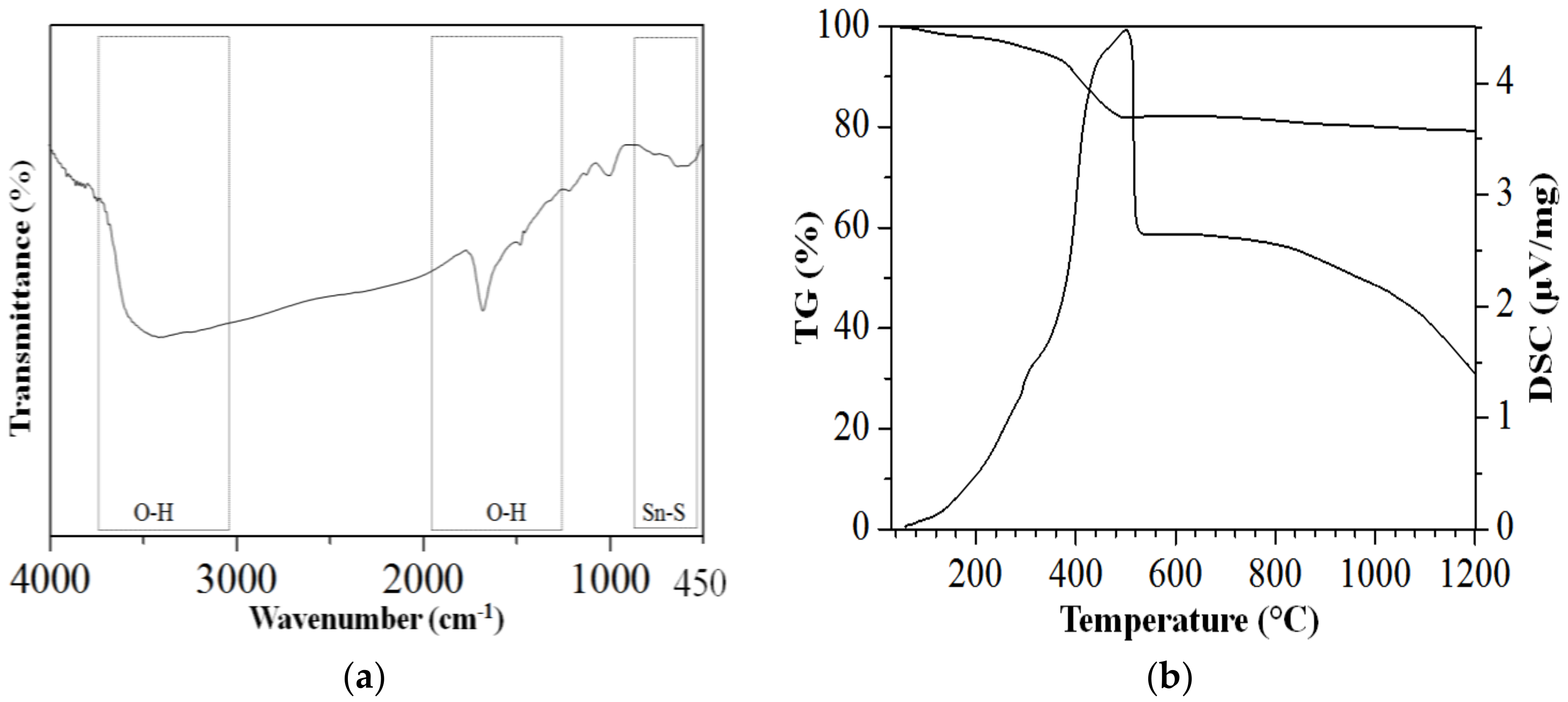
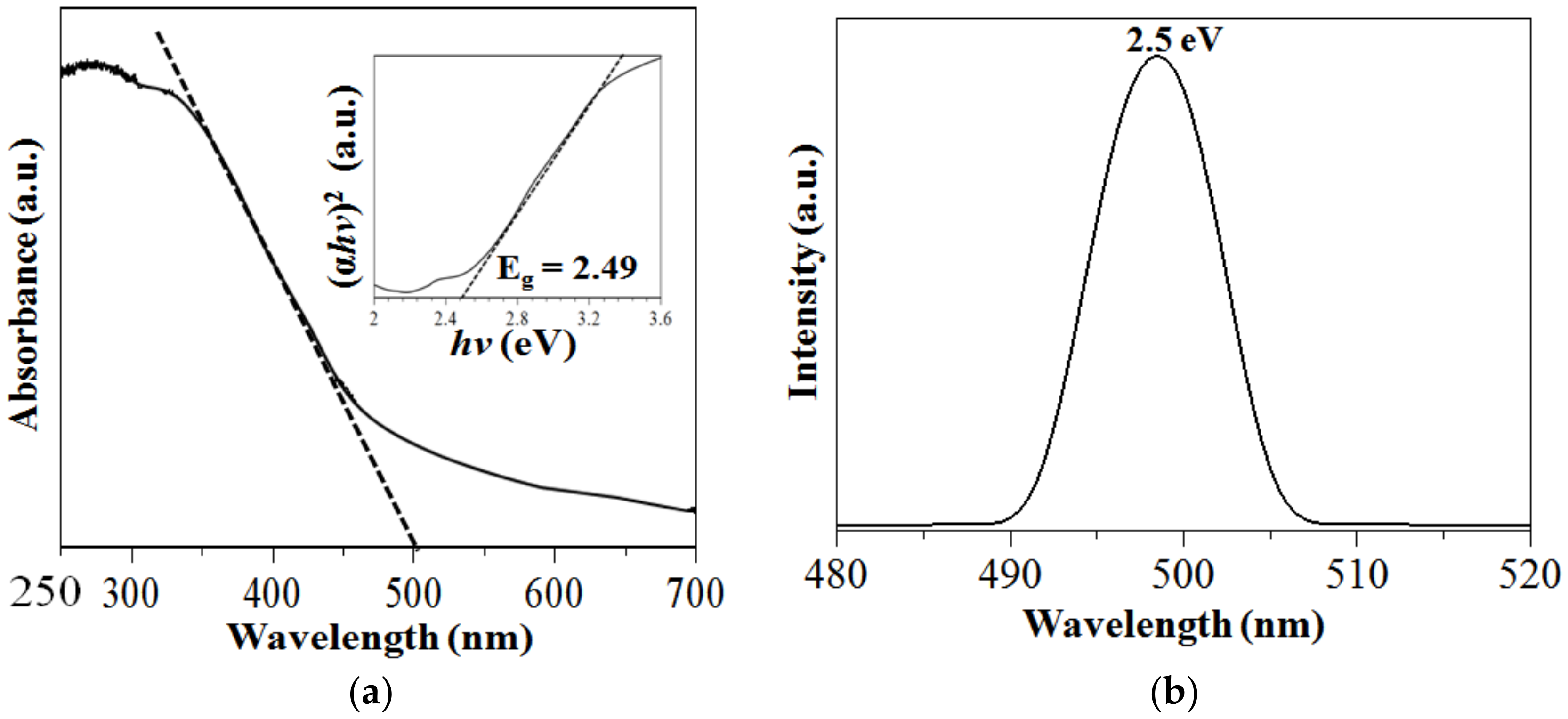
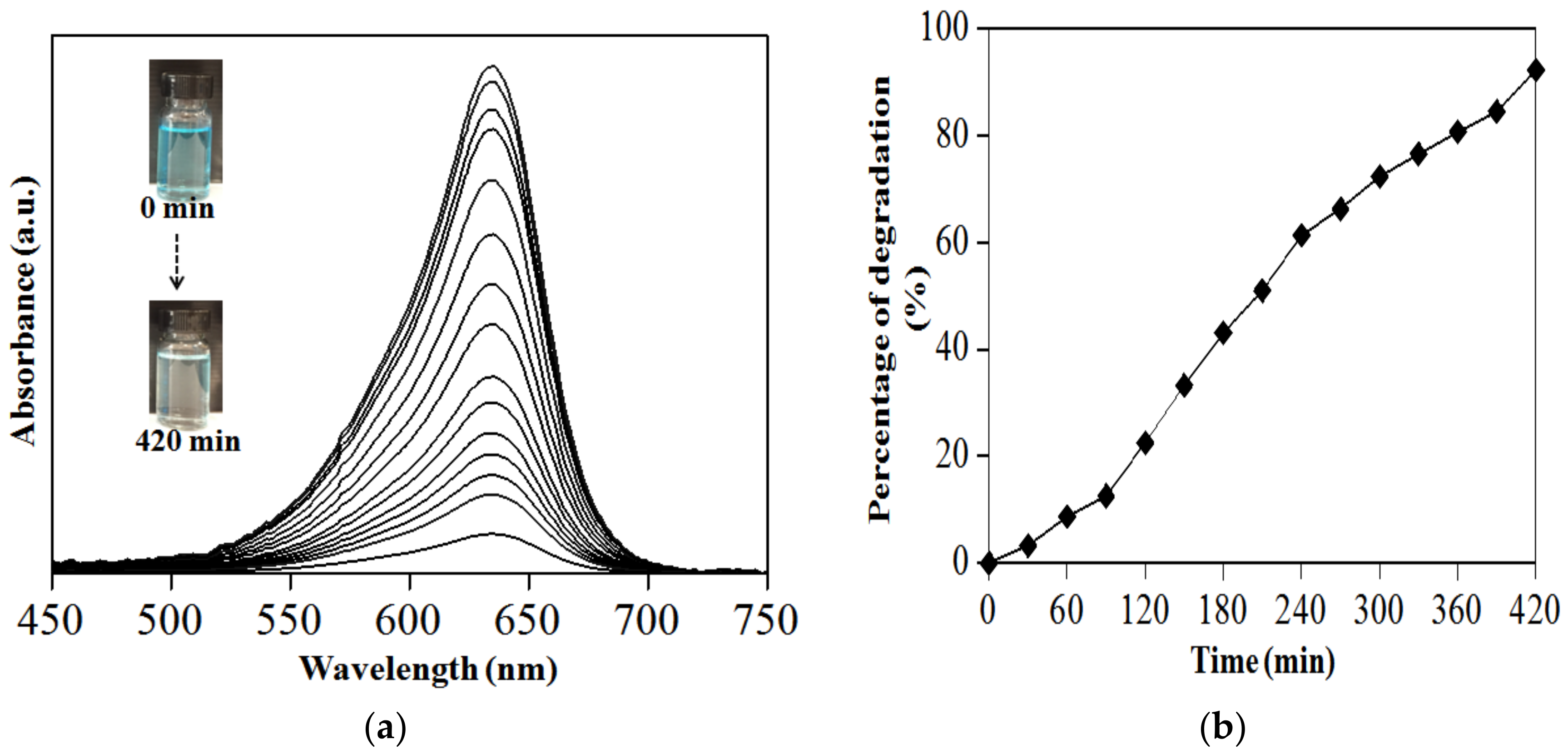
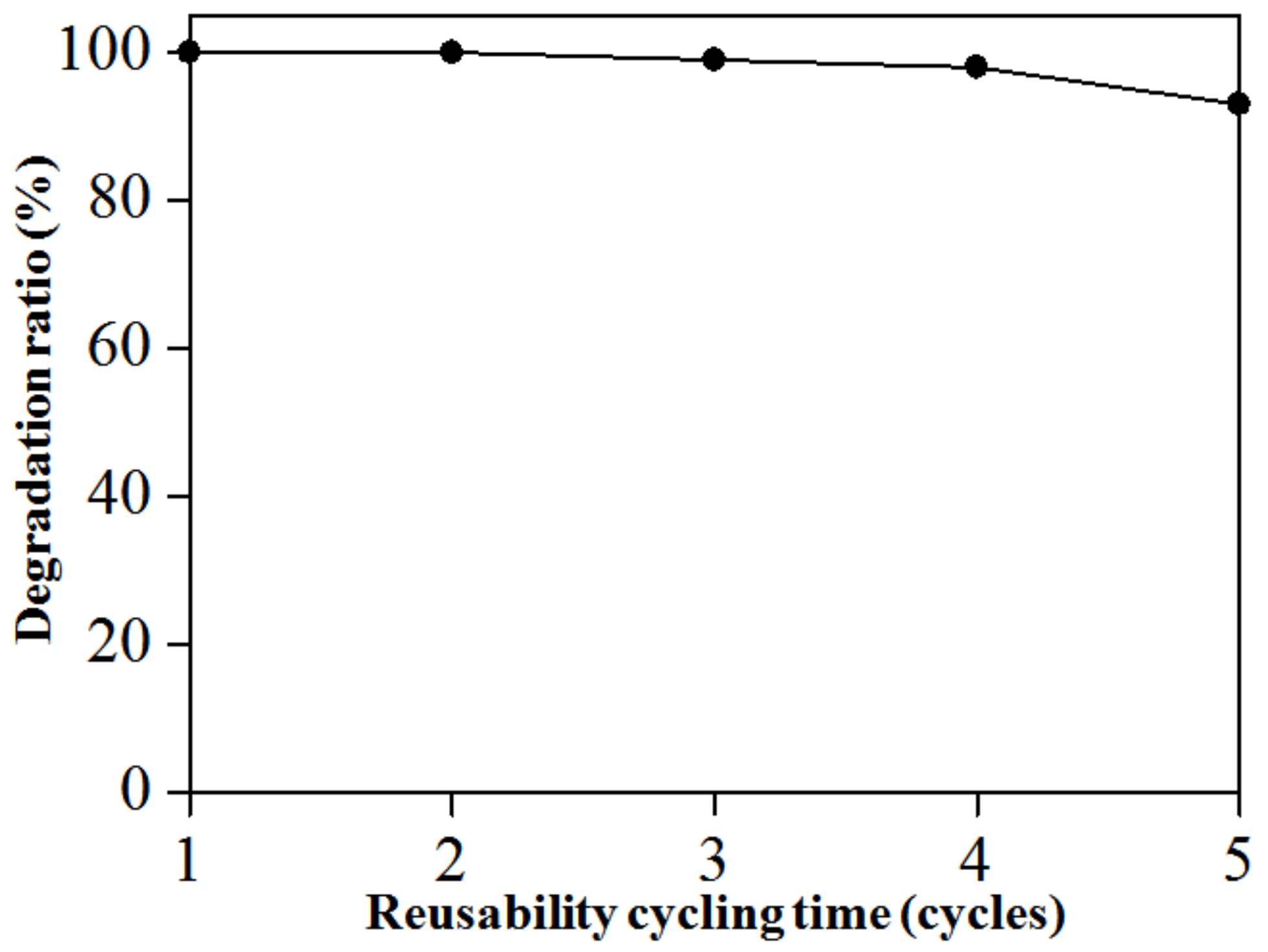

| Elements | Atomic Percentage (%) |
|---|---|
| Carbon (C) | 39.26 |
| Aluminum (Al) | 6.15 |
| Oxygen (O) | 5.28 |
| Sulfur (S) | 32.31 |
| Tin (Sn) | 17.09 |
© 2019 by the authors. Licensee MDPI, Basel, Switzerland. This article is an open access article distributed under the terms and conditions of the Creative Commons Attribution (CC BY) license (http://creativecommons.org/licenses/by/4.0/).
Share and Cite
Matmin, J.; Jalani, M.A.; Osman, H.; Omar, Q.; Ab’lah, N.; Elong, K.; Kasim, M.F. Photochemical Synthesis of Nanosheet Tin Di/Sulfide with Sunlight Response on Water Pollutant Degradation. Nanomaterials 2019, 9, 264. https://doi.org/10.3390/nano9020264
Matmin J, Jalani MA, Osman H, Omar Q, Ab’lah N, Elong K, Kasim MF. Photochemical Synthesis of Nanosheet Tin Di/Sulfide with Sunlight Response on Water Pollutant Degradation. Nanomaterials. 2019; 9(2):264. https://doi.org/10.3390/nano9020264
Chicago/Turabian StyleMatmin, Juan, Mohamad Azani Jalani, Hazwanee Osman, Qistina Omar, NorulNazilah Ab’lah, Kelimah Elong, and Muhd Firdaus Kasim. 2019. "Photochemical Synthesis of Nanosheet Tin Di/Sulfide with Sunlight Response on Water Pollutant Degradation" Nanomaterials 9, no. 2: 264. https://doi.org/10.3390/nano9020264







